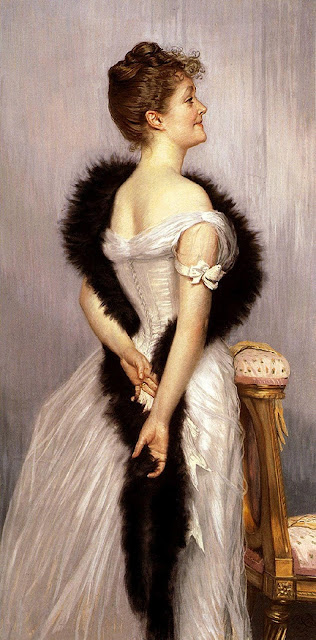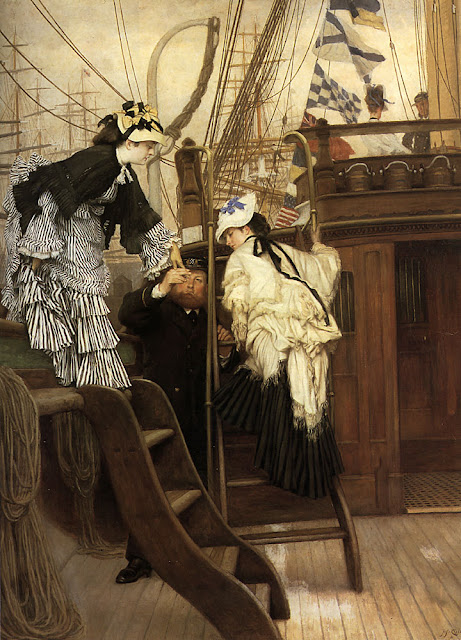James Jacques Joseph Tissot (1836-1902)
Part 2
James Jacques Joseph Tissot (1836-1902
Tissot was born Jacques Joseph Tissot in Nantes, to a middle class family. He initially studied art at Beaux-Arts in Paris. Tissot’s early paintings are mainly historical, & heavily influenced by the Dutch School. He came into contact with the Impressionists as a young man, and was leading a fairly unadventurous life. This was changed totally by the Franco-Prussian War of 1870. Following the crushing French defeat in this war, and the subsequent fall of the Paris Commune, Tissot decided to move to London, which he did in 1871. This move must have caused considerable problems in his life, and the painter needed to earn some money quickly. Tissot started, therefore, to paint accomplished highly finished pictures of London society ,and social events, including the famous ‘Too Early’ These pictures were virtually an instant success with the art viewing and buying public, but not with the critics.
Tissot’s succcess in London aroused considerable jealousy amongst his Impressionist colleagues in France, where he was regarded as a very minor figure. The critical hostility Tissot’s pictures met with, is not easy for us to understand today. The main criticisms were that the pictures were really only painted photographs, and they were vulgar. There is some truth in the first case, though the paintings show dazzling technique, and a dash of Gallic wit and sophistication, home grown English artists were quite unable to match. In the second case the basis of the adverse comment, was the class-consciousness of British society at that time. The pictures were held to show shallow nouveau-riche society at it’s worst.
In 1876 an event occurred which changed Tissot’s life. He met a young and attractive Irish divorcee called Kathleen Newton. Kathleen had married an English army officer in India. She had formed an adulterous relationship with another man, borne his child, and returned home in disgrace, beyond the pale of polite society. Kathleen Newton became Tissot’s mistress, and moved into his London home. This necessitated a radical change in his lifestyle, as the sophisticated, well-dressed, and good-looking painter had become a popular figure socially. Tissot withdrew from the social round, living quietly at his Grove End home with Kathleen. They did, however, entertain less conventional friends from the artistic community. Kathleen Newton became Tissot’s muse, and appeared in many of his pictures. She was in every sense the love of his life.
Another attraction for Tissot was the Port of London, and the river Thames. His paintings with the river as the background have an evocative atmosphere missing in his other work. One can almost smell the smoke, and hear the shouts of the dockers and watermen.
In 1882, Kathleen Newton died of consumption at the age of twenty eight. Tissot never recovered from this tragedy, and moved back to Paris within a week of her death .He was never again romantically involved with woman. His house in London, was sold to Alma-Tadema. Initially Tissot carried on painting society and genre pictures in Paris, but soon gave this up, devoting the rest of his life to painting religious scenes. He visited the Middle- East twice to find genuine backgrounds for his religious paintings. In late life Tissot became increasingly interested in Spiritualism, a vogue of the time, and of course his motivation for this interest is not a mystery.
Tissot died at Buillon on Friday the 8th August 1902.
A great artist, his beautiful fallen woman, and a tragic love story. It has everything!
In recent years Japanese and American collectors have fuelled a vast increase in the value of Tissot paintings. The critics remain hostile. Does it matter?



.jpg)


















































-large.jpg)













.jpg)
















ليست هناك تعليقات:
إرسال تعليق